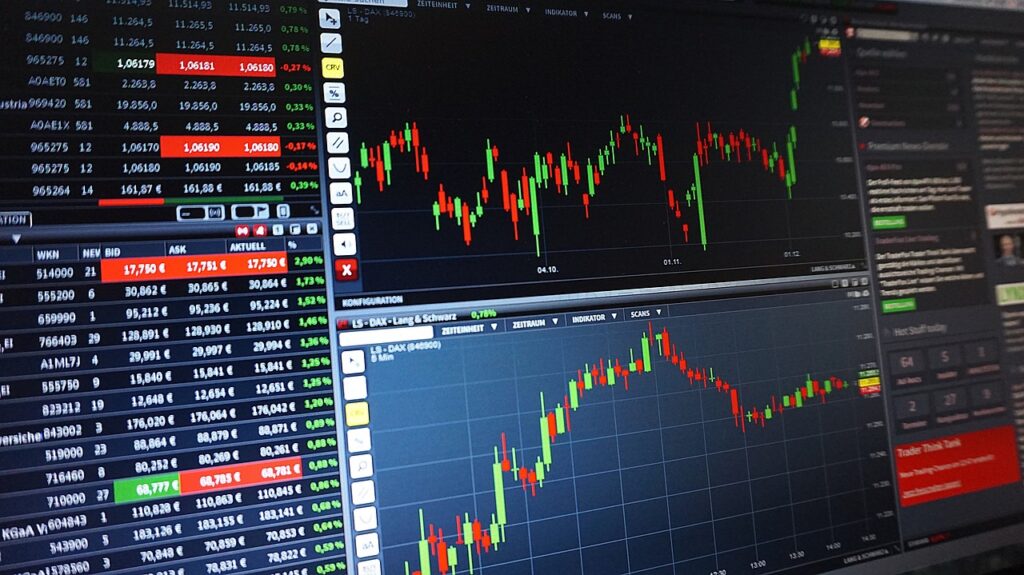
FIW Trade Indicator
Austria’s foreign trade in goods to decline significantly in 2024
The innovative FIW Trade Indicator signals a stagnation of Austrian foreign trade in goods at a low level in December.
Seit April 2024 publiziert das BMAW auf der FIW-Website monatlich aktuelle und qualitativ hochwertige Schätzungen für nominelle, reale und saisonbereinigte Warenaußenhandelsdaten auf Basis eines vom Institut für Höhere Studien entwickelten ökonometrischen Modells. Dadurch stehen aktuelle Prognosen (sog. Nowcasts) des monatlichen Außenhandels Österreichs – mit einem Vorsprung von mehr als zwei Monaten gegenüber den Veröffentlichungen der Statistik Austria – zur Verfügung. Neben den nominellen Werten weist der FIW Trade Indicator auch preisbereinigte reale Werte aus. Diese realen Außenhandelsdaten geben einen exakten Eindruck über die tatsächlichen Wohlfahrtssteigerungen Österreichs durch den Außenhandel, sie sind zudem saison- und arbeitstagbereinigt. Dadurch unterscheiden sich die Nowcasts von den von Statistik Austria publizierten unbereinigten, nominellen Werten.
Last Update: 22.01.2025

According to the current estimate of the FIW Trade Indicator, Austria’s real exports and imports of goods fell slightly again in December following the weak growth in November. Compared to the same month last year, there were significant declines in both exports and imports.
The first estimate of the annual results shows a significant slump in Austrian foreign trade in goods in 2024.
With the nowcast for December, a first estimate of the annual result for Austrian foreign trade in goods has now been made. According to this, real exports of goods have fallen by -5.3% compared to the previous year, while real imports of goods have fallen by -4.2%. Due to the strong fluctuations in energy prices, nominal imports of goods fell by -7.7% and nominal exports of goods fell by -4.8%. As a small consolation, this resulted in a positive balance for foreign trade in goods of an estimated +3.7 billion euros in the past year (after a deficit of -2.0 billion euros in the previous year).
At the end of 2024, the stagnation in foreign trade in goods that has persisted since the middle of the year continued. Following growth of +1.3% in November, real exports of goods fell again by – 1.2% in December. The figures for imports of goods were +0.9% in November and -2.0% in December.
The weak performance of Austrian foreign trade in goods is primarily due to the ongoing economic weakness in the eurozone. While real global trade has recovered moderately year-on-year since April, foreign trade in the eurozone continues to fall. There are no signs of a tailwind from the international economy towards the end of the year.
Der FIW Trade Indicator des BMAW
Statistik Austria publiziert die Daten zu nominellen Exporten und Importen jeweils zu Monatsbeginn mit einer Zeitverzögerung von mehr als 2 Monaten.
Das IHS wurde beauftragt mit State-of-the-Art ökonometrischen Methoden und zeitaktuellen hochfrequenten Daten (Wochen- und Monatsdaten) einen Nowcast (nominelle/reale Exporte und Importe, saisonbereinigt) für den jeweils aktuellen Monat (aktuell Jänner 24 / Statistik Austria publizierte November 23) zu erstellen.
Ab April 2024 wird das BMAW einen Nowcast auf Basis des Modells und jeweils zu liefernder Inputdaten des IHS erstellen.
Durch den Nowcast stehen zeitaktuelle Schätzungen der monatlichen Außenhandelsdaten Österreichs zur Verfügung (Vorsprung auf Statistik Austria > 2 Monate).
Der FIW Trade Indicator weist neben den nominellen Werten auch preisbereinigte reale Werte aus (bei Statistik Austria nur quartalsweise verfügbar). Reale Außenhandelsdaten geben vor dem Hintergrund hoher und volatiler Preissteigerungen einen exakten Eindruck über die tatsächlichen Wohlfahrtssteigerungen Österreichs durch den Außenhandel.
Die Daten des FIW Trade Indicator sind saison- und arbeitstagbereinigt. Verzerrungen durch saisonale Einflüsse bzw. die Lagerung von Feiertagen werden dadurch vermieden. Neben der exakteren Einschätzung der Wachstumsraten des Außenhandels ermöglicht dies auch eine zeitnahe Beurteilung der konjunkturellen Tendenzen im Außenhandel (Stagnation/Aufschwung/Abschwung).
Weiterführende Informationen: Projektbericht des IHS
Rückfragen an:
Bundesministerium für Arbeit und Wirtschaft
✉ Presseabteilung/Wirtschaft
☎ +43 1 711 00 805130
🔗 BMAW
🔗 Facebook
Institut für Höhere Studien (IHS)
✉ Martin Ertl
🔗 IHS